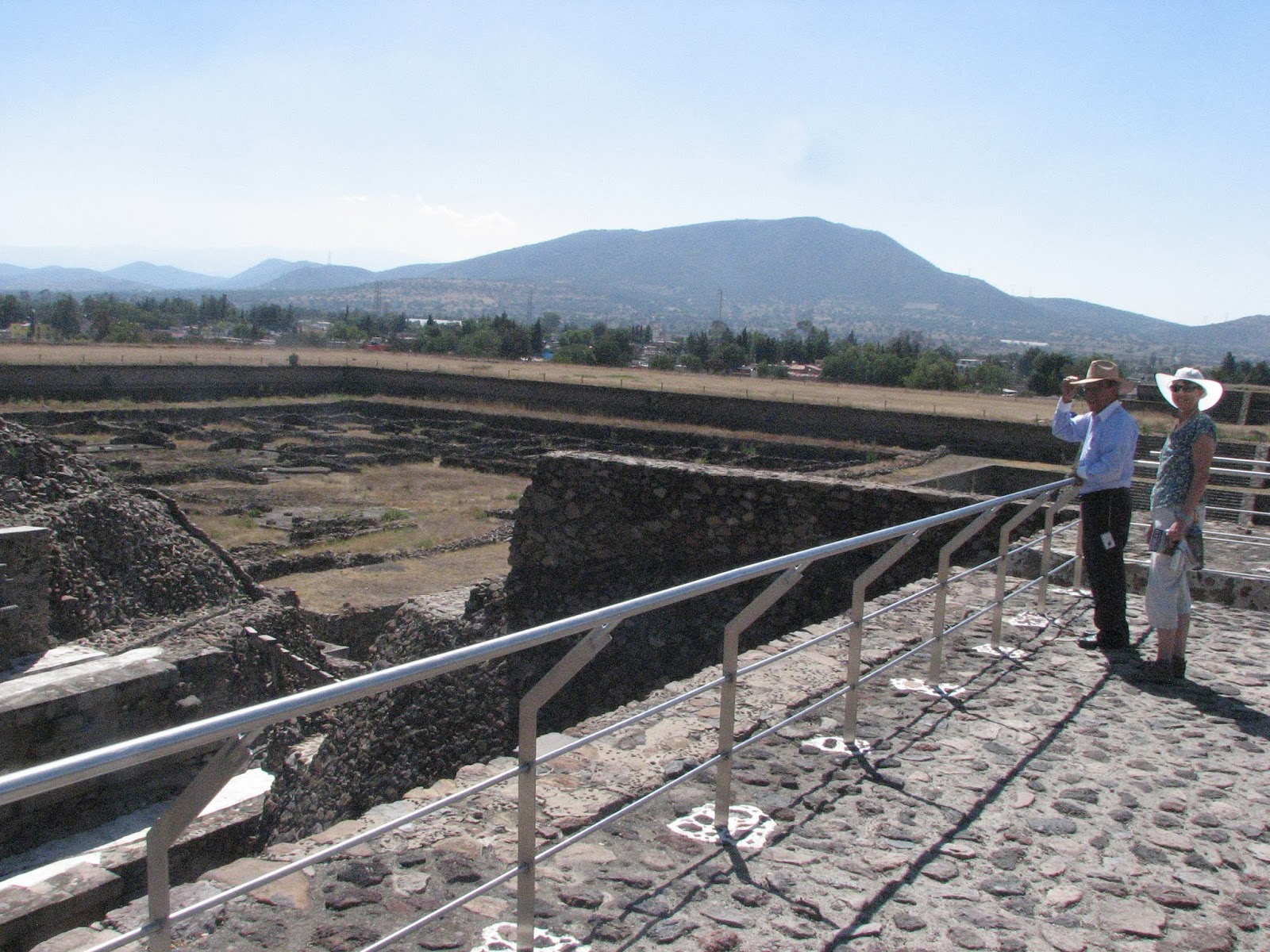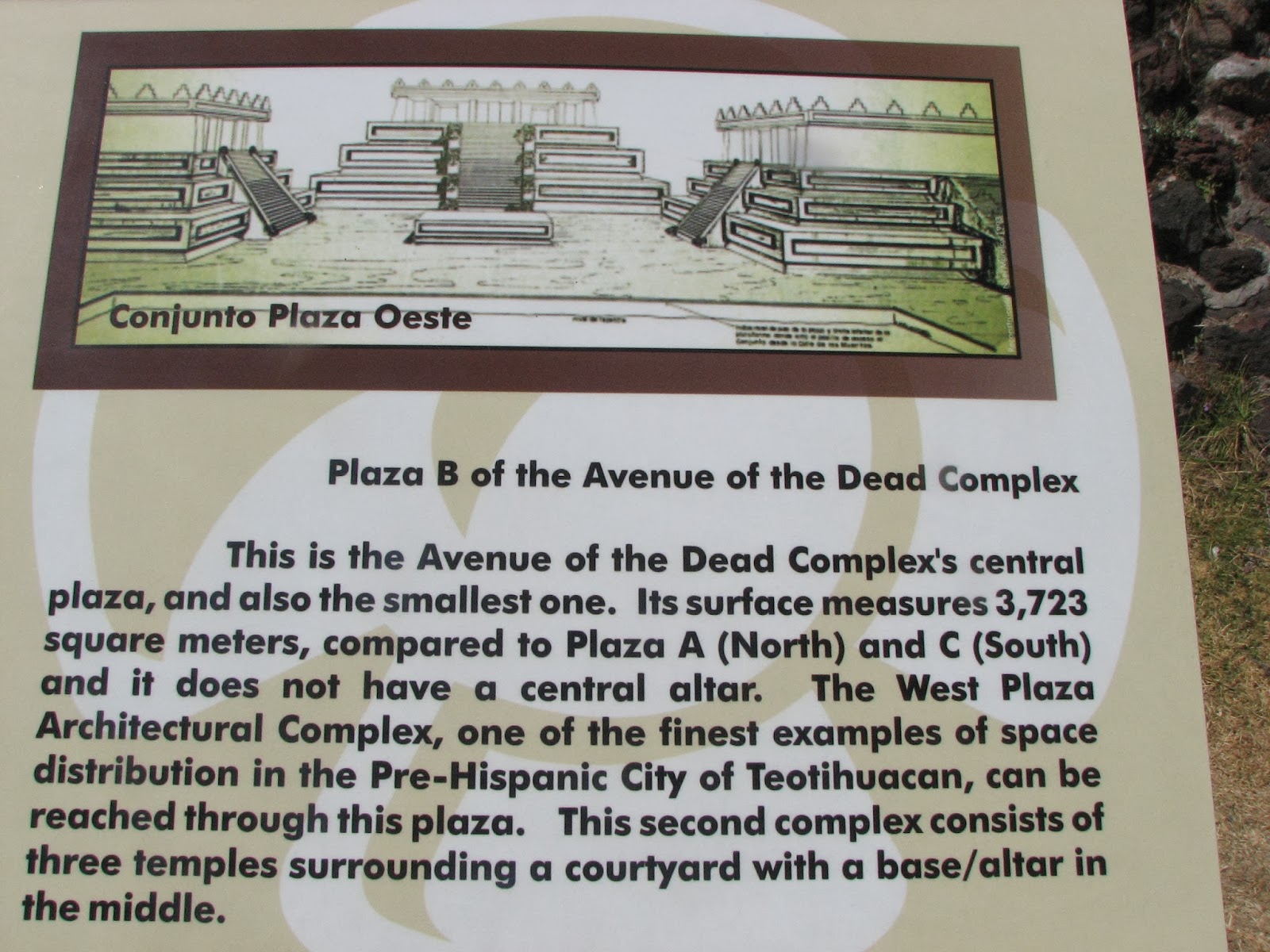These two photos are from our visit to Teotihuacan during the summer of 1988:
 |
| Before the pyramid was quite weedy but now they send a work crew to keep the pyramid weedless. |
Here are some more photos from our recent trip.
The Citadel
The "large quadrangle which the first Spaniards to visit the site named 'Ciudadela' as it reminded them of a fortress because of the central building or 'castle' from which ran a wall surround a court with one stepped entrance. Explorations made in the 20th century have revealed that the building was the Temple of Quetzalcoatl and that the 'wall' is made up of platforms 7 meters high with pyramidal structures on the top." [From Teotihuacan - History, Art and Monuments]
Temple at Quetzalcoatl
The Temple of the Feathered Serpent is the modern-day name for the third largest pyramid at Teotihuacan, pre-Columbian site in central Mexico. This structure is notable partly due to the discovery in the 1980s of more than a hundred possibly-sacrificial victims found buried beneath the structure.[1] The burials, like the structure, are dated to some time between 150 and 200 CE.[2] The pyramid takes its name from representations of the Mesoamerican "feathered serpent" deity which covered its sides. These are some of the earliest-known representations of the feathered serpent, often identified with the much-later Aztec god Quetzalcoatl.[3] The structure is also known as the Temple of Quetzalcoatl, and the Feathered Serpent Pyramid. [Wikipedia]
























No comments:
Post a Comment